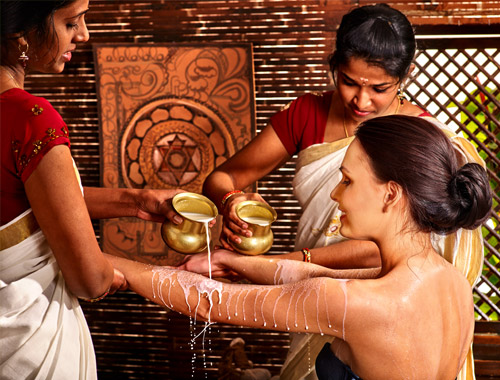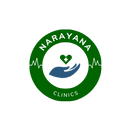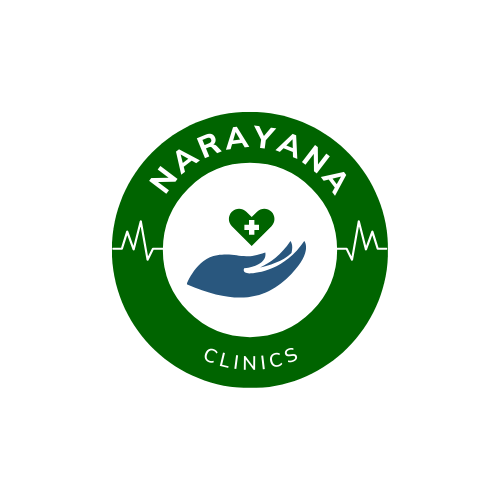Panchkarma
Panchakarma, an Ayurvedic therapy for detoxifying the body and rejuvenating health. It describes the various pre- and post-procedures, such as Snehana (oil therapy), Shirodhara (mind-body relaxation), Vamana (therapeutic vomiting), and Nasya (nasal detox). These treatments target different body systems, helping to balance doshas, improve metabolic function, and alleviate chronic ailments like back pain, arthritis, and eye problems.

Before Going for Basic Shodanas following procedures are done (Poorva Karma)
- Snehana Karma
- Abhyanga
- Shirodhara
- Kati Basti
- Janu Basti
- Akshitarpana
- Swedana Karma
Before Going for Basic Shodanas following procedures are done (Paschat Karma)
- Vamana
- Virechan
- Basti
- Nasya
- Rakta Moksha
- Purva Karma
- Pradhan Karma
- Paschat karma
Detailed Procedure of Panchakarma
Panchakarma is an ancient Ayurvedic treatment that aims to detoxify the body, balance the doshas (Vata, Pitta, and Kapha), and rejuvenate overall health. It involves five major procedures that work on the body through purification and elimination of toxins. Here’s a detailed breakdown of each step in the Panchakarma process:
1. Pre-Purification Procedures (Poorva Karma)
Before starting the Panchakarma therapies, the body must be prepared through two essential processes:
a) Snehana (Oleation Therapy)
- Internal Oleation (Snehapana): This involves the intake of medicated ghee or oils for several days to lubricate internal organs, tissues, and channels.
- External Oleation (Abhyanga): Therapeutic massage using herbal oils is applied to the body to help release toxins and calm the nervous system.
Duration: 3 to 7 days depending on the individual’s constitution and health condition.
b) Swedana (Sudation Therapy or Fomentation)
- After oleation, the body undergoes a sweating process, typically with steam infused with medicinal herbs. This helps to open the pores and mobilize toxins to be eliminated from the body.
- Swedana can be localized or applied to the whole body, depending on the treatment plan.
Duration: 1 to 3 days, usually performed after Snehana.
2. Main Panchakarma Therapies (Pradhana Karma)
These are the five core cleansing procedures that focus on the elimination of toxins from the body:
a) Vamana (Therapeutic Emesis or Vomiting)
- Purpose: To expel excess Kapha (mucus) from the body, especially from the respiratory and digestive systems.
- Process: After proper preparation with internal and external oleation, a special medicinal decoction is given to induce vomiting.
- Benefits: Effective for conditions like asthma, bronchitis, allergies, and skin diseases.
Duration: 1 day (after proper preparation for several days).
b) Virechana (Purgation Therapy)
- Purpose: To eliminate excess Pitta dosha from the body via the gastrointestinal tract.
- Process: After the preparatory stages, the patient is given herbal laxatives to induce bowel movements and cleanse the intestines.
- Benefits: Helps with liver and skin disorders, hyperacidity, and digestive issues.
Duration: 1 day, but preparation may take a few days.
c) Basti (Medicated Enema Therapy)
- Purpose: To balance Vata dosha by cleansing and nourishing the colon.
- Process: There are two types of Basti:
- Niruha Basti (Decoction Enema): A medicated decoction is administered to flush out toxins.
- Anuvasana Basti (Oil Enema): Medicated oils are used to lubricate and nourish the colon.
- Benefits: Beneficial for chronic constipation, arthritis, lower back pain, and neurological conditions.
Duration: 5 to 30 days, depending on the individual’s condition.
d) Nasya (Nasal Administration)
- Purpose: To cleanse and detoxify the nasal passages, sinuses, and head area, removing excess Kapha and toxins.
- Process: Herbal oils or powders are administered through the nostrils after the head and neck are massaged and fomented. The therapy clears out accumulated toxins in the head, nose, and throat regions.
- Benefits: Effective for sinusitis, migraines, hormonal imbalances, and respiratory issues.
Duration: 7 to 30 days, depending on the condition being treated.
e) Raktamokshana (Bloodletting Therapy)
- Purpose: To purify the blood and eliminate toxins related to Pitta disorders.
- Process: This can be done through various methods like leech therapy (Jalauka) or venipuncture. The therapy cleanses the blood and is particularly useful for skin diseases, abscesses, and other blood-related disorders.
- Benefits: Useful in treating skin disorders, hypertension, and inflammatory conditions.
Duration: Typically done once, but can be repeated depending on the condition.
3. Post-Purification Procedures (Paschat Karma)
After the Panchakarma treatments, it is crucial to restore the body’s strength and rebuild digestive fire (Agni). This phase includes:
a) Samsarjana Karma (Dietary Regimen)
- Gradual introduction of light, easily digestible food like rice porridge (kanji), slowly progressing to a regular diet. This helps in rejuvenating the digestive system.
- Typically, a special diet called Peya (thin gruel) is recommended initially, followed by thicker gruels and more substantial foods as digestion improves.
b) Rasayana (Rejuvenation Therapy)
- Herbal medicines and tonics are administered to restore vitality, strengthen immunity, and enhance overall well-being.
- These preparations nourish the tissues and rejuvenate the body.
c) Lifestyle Guidance
- Following Panchakarma, patients are advised to maintain a healthy lifestyle, including daily routines (Dinacharya) and seasonal regimens (Ritucharya), to balance the doshas and maintain health.
- Yoga, meditation, and breathing exercises (Pranayama) are recommended to sustain the benefits of Panchakarma.
Key Benefits of Panchakarma
- Detoxifies the body by removing deep-seated toxins.
- Balances doshas, thus promoting physical and mental well-being.
- Boosts immunity and enhances digestion.
- Improves energy, vitality, and mental clarity.
- Helps in managing chronic diseases and preventing future health issues.
Who Should Avoid Panchakarma?
Panchakarma may not be suitable for:
- Pregnant women
- People with very low immunity or who are severely weak
- Certain acute illnesses, such as severe infections or heart conditions
- Children or the elderly (without proper medical guidance)
Panchakarma should always be conducted under the supervision of a trained Ayurvedic practitioner for safe and effective results.

